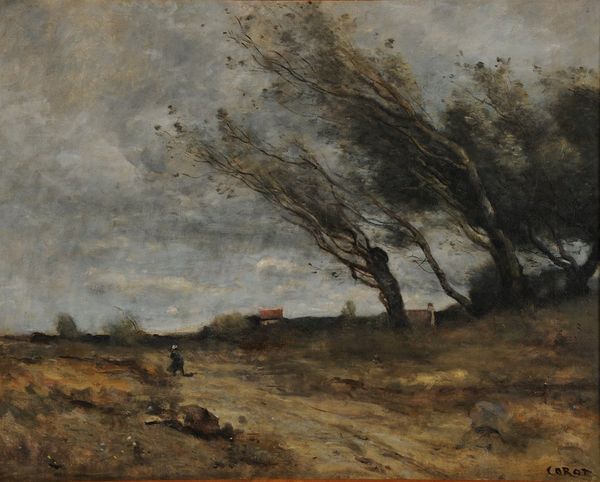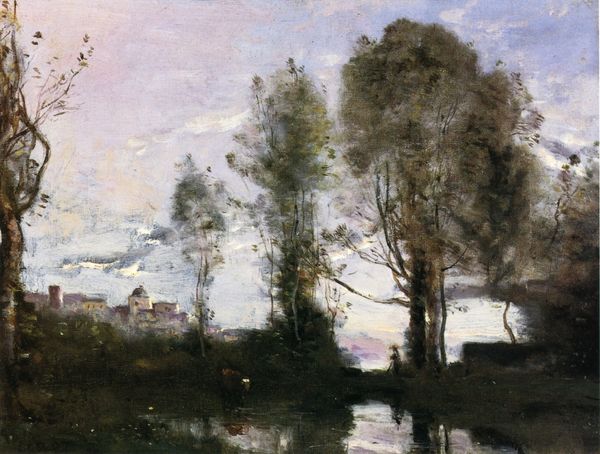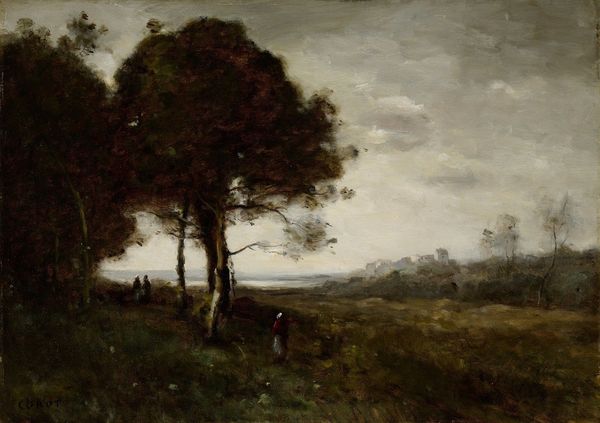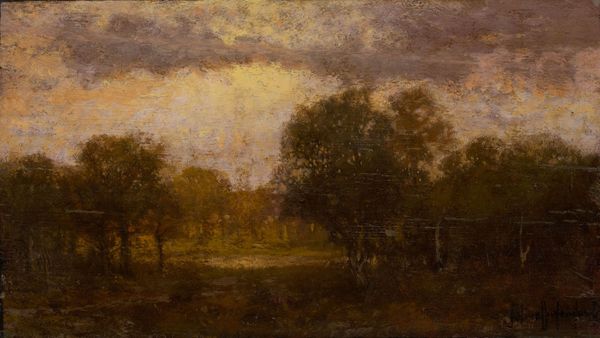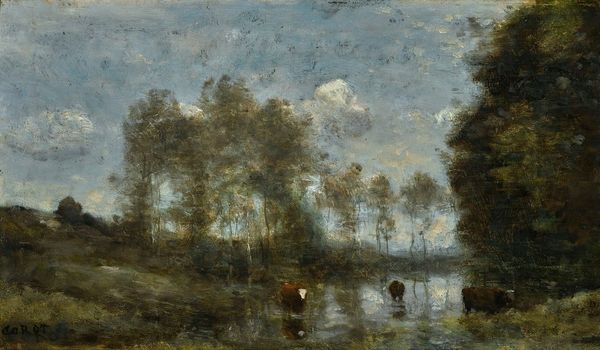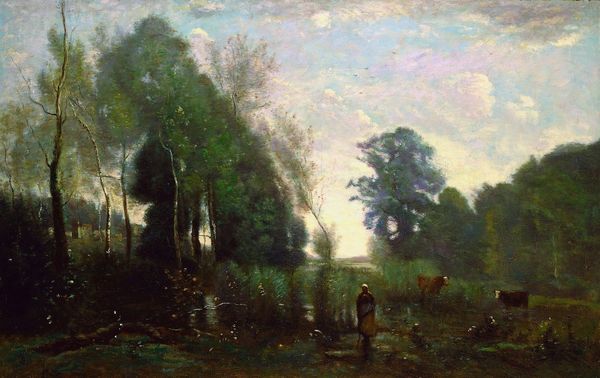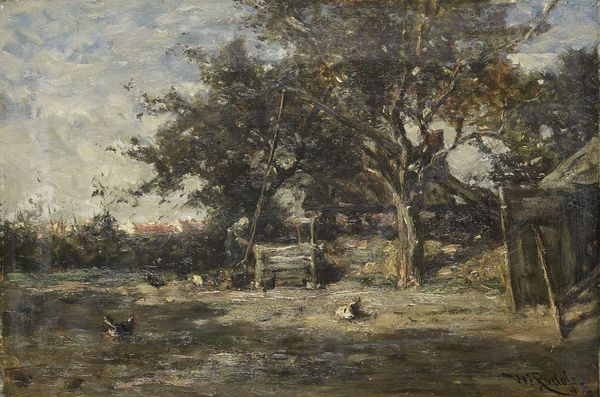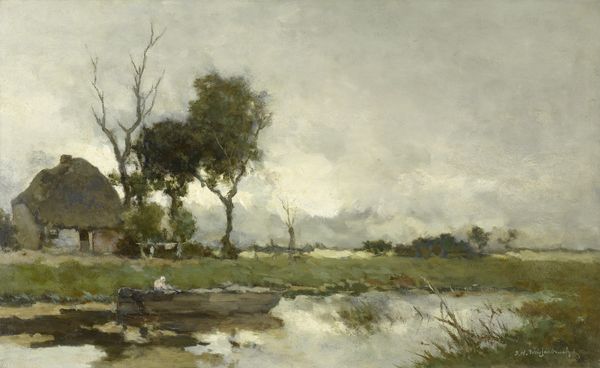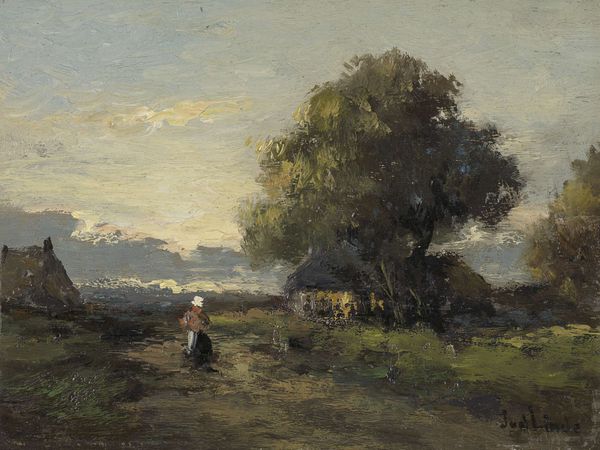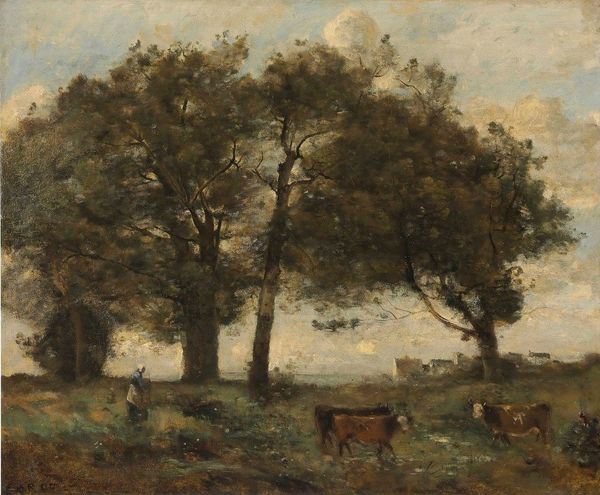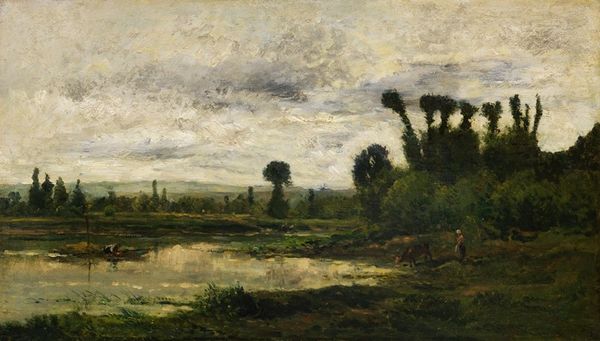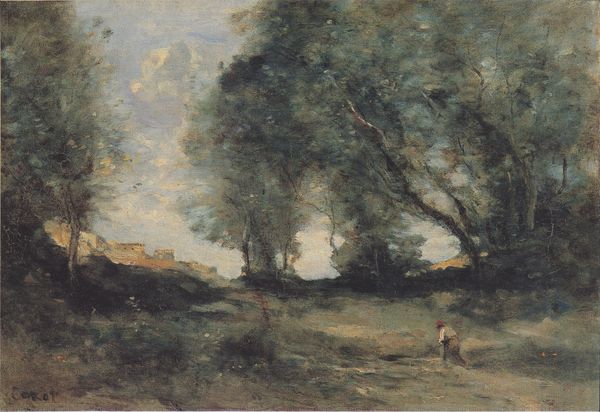
Dimensions: 38.5 x 43.4 cm
Copyright: Public Domain
Editor: This is Corot’s "Summer Landscape," painted sometime between 1855 and 1860. It's an oil on canvas piece with such a hazy, dreamlike quality. What do you see in this work? Curator: The interesting thing to me is the physicality of paint application itself, isn't it? Corot was known for working *en plein air*, but the haziness suggests this may be studio work done after time in the fields, making something new through labor and memory. Consider the implications: paint becomes not just representation, but almost an extracted distillation of the landscape itself. Editor: So, you are focusing on Corot’s physical act of painting rather than what he is depicting? Curator: Exactly. Look at those blurry figures and almost undefined shapes of the trees. Corot's method pushes painting away from traditional academic landscapes and moves it closer to Impressionism, questioning art’s industrial means, while the presence of laborers or animals highlights broader concerns around materiality. How did Corot's artistic labor shape and define a particular experience within a specific social environment? Editor: It’s almost like the subject becomes secondary to the physical reality of its creation and cultural implication. I hadn't thought of it that way before. Curator: Precisely! And this kind of artistic shift has its own production implications too, paving way for movements which explicitly interrogate art’s status within the rapidly industrializing mid-19th century. Editor: That perspective makes me see Corot’s place in art history so differently. Thanks for expanding my understanding of this artist. Curator: My pleasure, art should constantly be examined in light of process.
Comments
stadelmuseum almost 2 years ago
⋮
The artist Camille Corot travelled across the French countryside on foot in search of picturesque, intimate landscape settings. He made oil sketches on the spot and later developed them in his studio. Corot's relaxed brushstrokes produce blurred contours around the objects, which he then smudges to create a uniform, atmospheric impression. With his selection of simple, rural subjects, he distanced himself from neoclassical painting. Corot is regarded as the main representative of the Barbizon School, and his painting style makes him one of the forerunners of Impressionism.
Join the conversation
Join millions of artists and users on Artera today and experience the ultimate creative platform.
